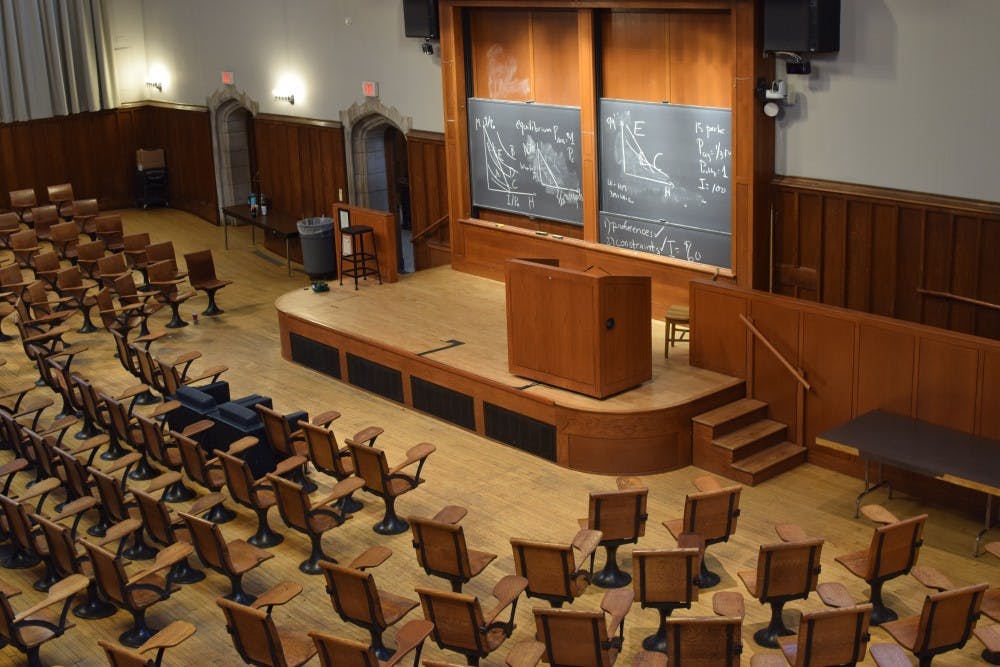A common class schedule students will have, based on the structure of most University courses, is two 50-minute classes per day, Monday through Thursday. This schedule features two serious flaws: It creates barely usable downtime between classes, and it can cause organizational issues in regard to precepts. A solution to both problems would be the University offering more 100-minute courses that meet once a week so students could more often have just one 100-minute class per day.
If a student takes two Monday-Wednesday classes and two Tuesday-Thursday classes, it could result in an unideal schedule where the student only has 70 minutes between said classes each day. One way to use this time could be getting a meal, but depending on the class locations on campus, leaving one class to go to a dining hall or eating club and heading straight to the next class could easily leave someone with only 30 minutes of downtime. For some students, this is not enough time to work on assignments or do readings effectively. If a student wants to be at class a few minutes early to find a seat and get situated, they may only have 25 minutes of free time between a meal and class, which may not even be enough time to go to a dorm or library, due to the time spent walking.
Taking one 100-minute class a day would eliminate this problem. With the exception of precepts or labs, students would only have one academic activity per day, with a set time and location. This would allow for the student to use the other hours in the day in whatever way they find best. For example, having class from 9 a.m. to 10:40 a.m. would mean that the rest of the day, besides a precept or lab, would not have any other mandatory scheduled events, so almost all the time before and after that class could be used freely. On the other hand, having one class from 9 a.m. to 9:50 a.m. and another class from 11 a.m. to 11:50 a.m. puts constraints on how a student can use the downtime between classes.
A counterargument is that students can just have two back-to-back, 50-minute classes per day, such as one at 9 a.m. and one at 10 a.m. However, this one exception to the problem of downtime does not answer the problem of precept and reading organization. If a class meets on Monday and Wednesday, it is possible that for a given week of precepts, certain sections will actually cover less course material than others. For example, if this Monday-Wednesday class has precepts on Tuesday, Wednesday, and Thursday, the students in the Tuesday precept will not have seen Wednesday’s lecture material. Instead, they will either be covering material from the previous week’s Wednesday lecture, or worse, they will be going over material the students have not even seen. Having class once a week prevents any precepts from falling behind the others, prevents any precepts from attending more lectures than the others at any given time in the semester, and guarantees a more equal experience across precepts in general.
This problem does not just exist at Princeton; Harvard, Yale, Brown, and other institutions also have classes with this structure, and I would suspect their students face similar issues to those outlined in this article. University departments should make an effort to offer more 100-minute classes that occur once a week. Currently, a vast amount of courses are 50 minutes twice a week with a precept component as well. Making this change will give students more options for how to schedule their weeks and more time to engage with course material.
Hunter Campbell is a junior politics concentrator from East Arlington, Vt. He can be reached at hunterc@princeton.edu.








